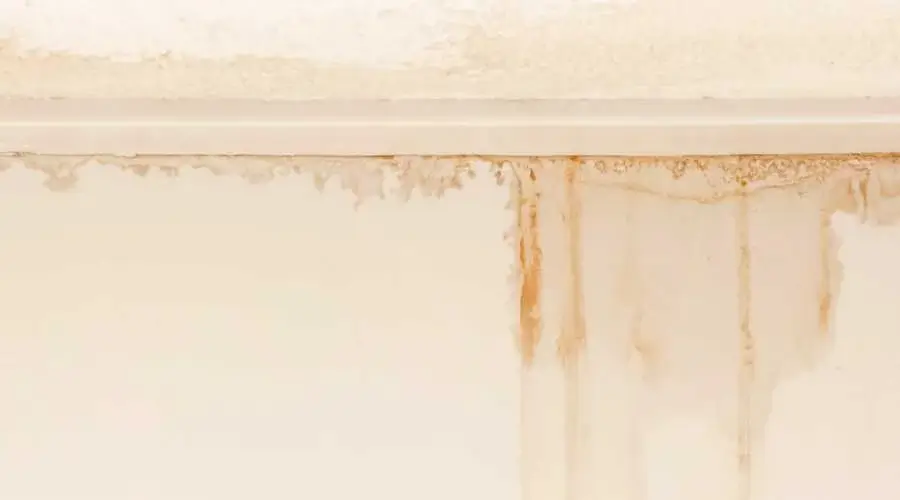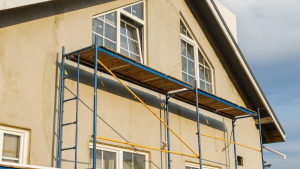Water getting into stucco can be a very dangerous problem. Style-wise, stucco siding may be a good choice for a home’s exterior, but if it isn’t put correctly, water can get in through a number of points.
Water getting into stucco can cause mold and other problems related to water damage, so It’s important to deal with it right away. Understanding how water gets into plaster is the first step to keeping it from happening and fixing it if it does.
How Can Water Infiltrate Stucco?
Stucco is meant to be a robust, smooth wall that can handle water without problems. So how does water get into stucco? Water can get into concrete walls by being absorbed directly, through cracks, or through poor fitting.
Direct Infiltration
Stucco is supposed to be waterproof when coated, but sometimes it needs to work better. Water can get into the stucco surface directly in a lot of ways, which can lead to a problem of water getting into the stucco worse. Wicking can make the water go very deep into the soil once the water gets past the top.
Stucco can let water in if it is always in touch with water. If the area isn’t always wet, it should be fine in the weather. But water can find a way inside. You could have stucco water leakage if you have sprinklers that keep the walls wet by accident or if there is another source of constant water.
Entering Through Cracks
Of course, plaster is only a sound water barrier when it is solid and in one piece. If holes form for whatever reason, water can get inside. Once they get inside, they can cause swelling and moving, making cracks bigger and letting more water in.
Many things can cause cracks. Small cracks can appear outside your home if it moves over time. This is fine with the building itself. But it can let water get inside, which can cause mold and other issues.
Improperly Installed Flashing
Stucco can make a strong wall but can’t cover your whole house. Your stucco siding will touch your windows, the overhang of your roof, and other parts of your home at different places. Flashing and moisture shields keep water out at these places.
But water can enter these places if the stucco needs to be installed correctly. Don’t forget that even if a small amount of water gets in, it could cause much damage over time.
What Factors Can Contribute to Water Intrusion?
Many different things can lead to water getting in. Additional items outside your home, growing plants on the stucco, and other things can all play a part.
It’s essential to know about these possible risks before you go. Over the years, they could be doing damage you don’t see, leading to mold and rot in your house. Water getting in can cause many problems, so check these important things to protect your stucco walls.
Planters and Plants Too Close to Walls
When plants are too close to outside walls, they can quickly cause big problems. The fact is that the earth has a lot of water in it. If dirt touches the stucco on your house, the wetness will slowly move inside.
If you have pots, flowerbeds, or garden boxes close to the side of your house, they could be doing real damage. Any plant that grows too close to your wall can cause it to get too wet, which can be bad for its long-term care.
Light Fixtures
This lets water get in quickly. Water gets into the stucco through exterior light fixtures. These make a hole in the plaster for the light bulb box, and that hole doesn’t always have a moisture barrier in it. This lets water get in the walls quickly when it rains.
The only issue, but the most usual one, is the lights. All kinds of public setups can cause the same trouble. Water can get into your home through any outdoor faucet. Water can also get inside when a deck or patio is installed next to the house and isn’t properly sealed off.
You might also notice a similar problem if different parts of your house have different types of siding. It can be hard to ensure that any seam is done right because different types of siding have their things to consider. You can avoid this trouble by making sure that a professional does the fitting of your siding.
Ivy and Other Growth
Do you have ivy growing on your house’s walls? It looks great, but it is not suitable for your home. Ivy is a plant that comes out of walls and sticks to them with tiny pieces called rootlets. These protrusions can break through the surface of the stucco and let water in.
Over time, ivy can cause a building a lot of damage and let a lot of water in. Most people wouldn’t think a pretty plant like ivy could hurt them, so it’s essential to talk about it. But you shouldn’t forget that other plants could be harmful.
The stucco on your house can be hurt just as much, if not more, by moss. Its roots can go down a long way into the ground.
Which lets water get in and spread through the walls. Even though most people don’t let moss grow uncontrolled on the side of their house, you should take action right away to avoid damage.
Deal with Stucco Water Intrusion the Right Way
Would water be getting into your house through the stucco? If so, you can call CMB Wayne Stucco & EIFS to learn about your options. We can remove broken cement and fix it. We can also treat the area to help prevent future problems and build various walls.


